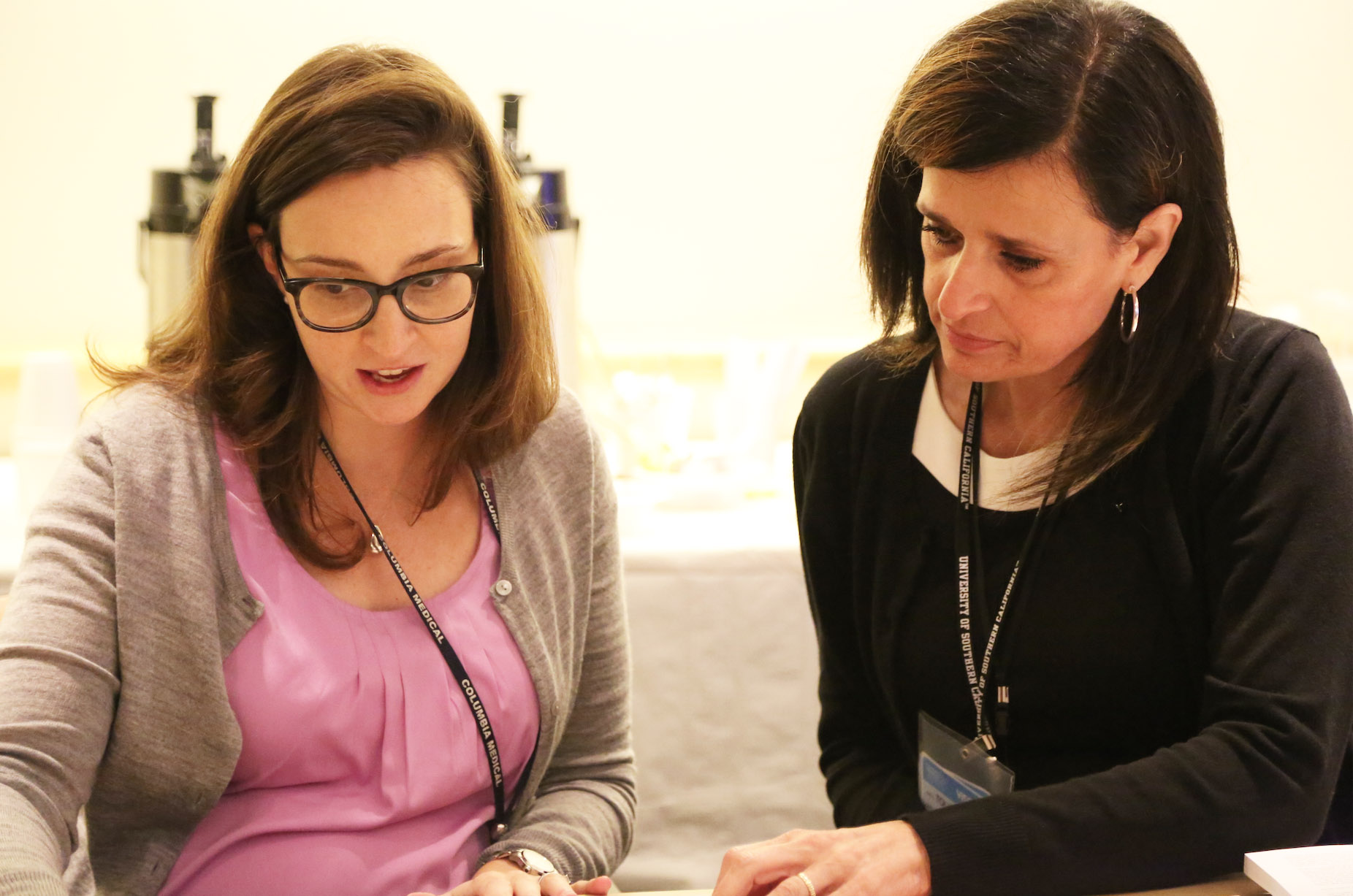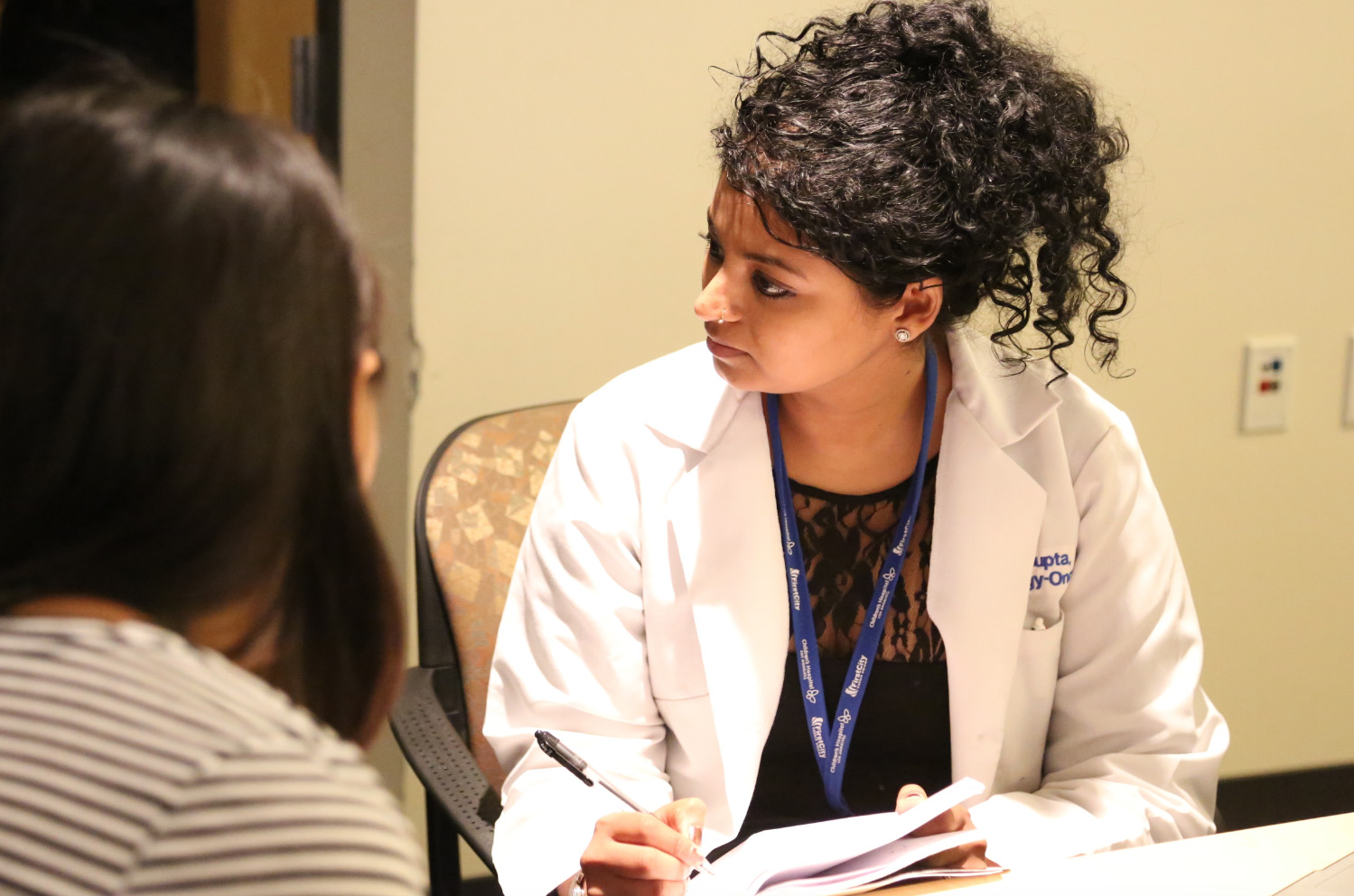New Course in Study Design Teaches the Elements of Clinical and Translational Research Protocols
There's a lot more to clinical and translational research design than meets the eye.
Fellows, medical residents, and most junior medical faculty throughout USC, the Keck School of Medicine, and Children's Hospital of Los Angeles (CHLA) are expected to conduct original clinical and translational research. Despite years of training, however, physicians typically reach these positions without hands-on experience in research design -- resulting in unsuccessful proposals or lower-quality studies that can slow their research careers.
To shorten the learning curve, the Southern California Clinical and Translational Science Institute (SC CTSI), the Keck School of Medicine Departments of Otolaryngology-Head & Neck Surgery and Preventive Medicine, and CHLA have partnered to develop Introduction to Clinical and Translational Research Study Design, a new course that will be offered annually.

Cecilia Patino-Sutton, MD, MEd, PhD (right) discusses ideas with a CHLA physician during the course
"This is something we've been thinking about for a long time because there is a need to train physicians who are very early in their careers as researchers," said Cecilia Patino-Sutton, MD, MEd, PhD, Director of Education for the SC CTSI Education, Career Development, and Ethics program.
"Most residents have had an introduction to basic research, but clinical and translational research is distinct from basic scientific research, with a different set of questions," said course co-director Eric Kezirian, MD, MPH, Professor of Clinical, Keck School of Medicine of USC. “Issues such as causality and bias, ethical and privacy considerations, and clinical factors, among others, must be considered at all stages of study design.”
Applying what they learn
The course is structured around eight core topics. Each weekly session brings a different expert lecturer.
Applicants must have a prospective research topic and faculty advisor to be admitted to the course, and they apply information from lectures and reading as they develop their actual research protocol. The second half of each three-hour class session is devoted to small-group discussion, where course attendees trade feedback on protocols and receive guidance from the lecturers.
"By the end of the course they will have a completed research protocol ready to be submitted to the IRB," said Patino-Sutton.
"You learn every aspect about shaping a research protocol, in terms of coming up with a hypothesis, what kind of study design you'll need to answer the hypothesis, and what sample size you'll need to achieve the statistical power to make your answer significant," said course participant Jasper Shen, MD, a resident in otolaryngology. "There's a lot more to clinical and translational research design than meets the eye."
Beating the traffic
In recognition of the scheduling constraints all residents face, the course was taught in two places – at once. The lecturers delivered their talks at the Norris Research Tower on the USC Health Science Campus, before approximately 20 students. Meanwhile, a second group of 20 students participated from a classroom at CHLA, on Sunset Boulevard in Los Angeles, linked remotely via live video and audio. The small-group discussions occurred live and in-person separately in each location.

Shveta Gupta, MD, in discussion with colleagues during a breakout session
"If I had to go to USC I would not be able to make it," said Shveta Gupta, MD, a hematology oncology fellow at CHLA. "It was the only way I could have taken the course."



